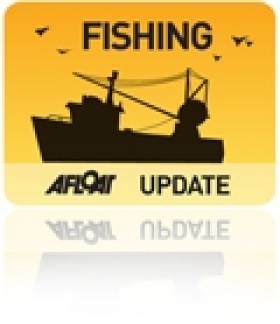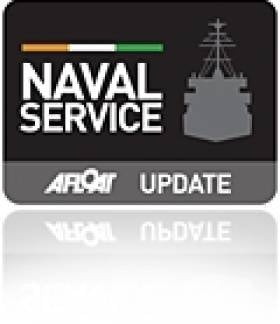Displaying items by tag: LEEmer
Emer’s Short Journey Marks Her New Role to Far Distant Shores
#EmerNIGERIA – The former Naval Service OPV L.E. Emer took the short journey between the Naval Base on Haulbowline Island to Cork Dockyard Ltd today for upgrading work for her new owners, writes Jehan Ashmore.
The 65m vessel was brought at public auction last month for €320,000 by Nigerian based Uniglobe Group and is to be used for work in the Niger Delta.
For now she is likely to remain at the dockyard into next month before finally departing from the Rushbrooke facility. She was launched in 1978 from the same site when Verolme Cork Dockyard had run the shipbuilding business that saw five patrol vessels commissioned for the Naval Service.
Her new owner Mr. Imhobio who is a resident for parts of the year in London had said the ship may call to capital. The decision to make an en-route call to the capital though remains subject to the cost of the diversion in both time and miles as part of her repositioning voyage to Nigeria.
EU Parliament to Vote on New Common Fisheries Policy
#ReformedCFP- By coincidence on today's public auction of decommissioned L.E. Emer, which carried out countless fishery maritime patrols, MEP's are to vote on the EU's new policy of the European Maritime and Fisheries Fund (EMFF): 2014-2020, writes Jehan Ashmore.
The EMFF is the third and final legislative file in the reform of the common fisheries policy (CFP) which has seen the fishing industry particularly dependent on subsidies down through the years.
The subsidies account for 40% of the landing price accounted for from both direct and indirect public funded monies. The upgrading of existing boats and new vessels provided by grants further accentuates problems by impacting on reducing fish stocks.
The Environmental Pillar are calling on MEP's to end years of over-fishing in the industry which has progressively led to lost jobs due to subsidiary-driven growth and renovation of the EU's trawler fleet.
The umbrella group comprises 26 national environmental organizations that campaign to protect and enhance the environment and also promote economic creation through sustainable eco-systems.
In addition Environmental Pillar are seeking increased financial aid to gather data collection, control and enforcement of the industry.
Among those making up the diverse group are: An Taisce, CoastWatch, Irish Whale & Dolphin Group, Irish Doctors' Environmental Association, Irish Natural Forestry Foundation and Zero Water Tolerance.
Naval Service to Sell Off Pair of Older Patrol Vessels
#NavalService – Two Irish-built navy patrol ships launched at Verolme Cork Dockyard, are to be sold off after 40 years of service according to the Herald.
LE Emer (P21) and a sister ship LE Aoife (P22) were built between 1978 and 1980 at the Rushbrooke shipyard near in Cobh, Co Cork.
The first ship of four in the Offshore Patrol Vessel (OPV) class built in Cork in 1972, the LE Deirdre (P20) , was decommissioned in 2001 and sold for €190,000. She was later converted into a luxury yacht.
The two ships will be replaced by two new OPVs currently under construction in the UK.

























